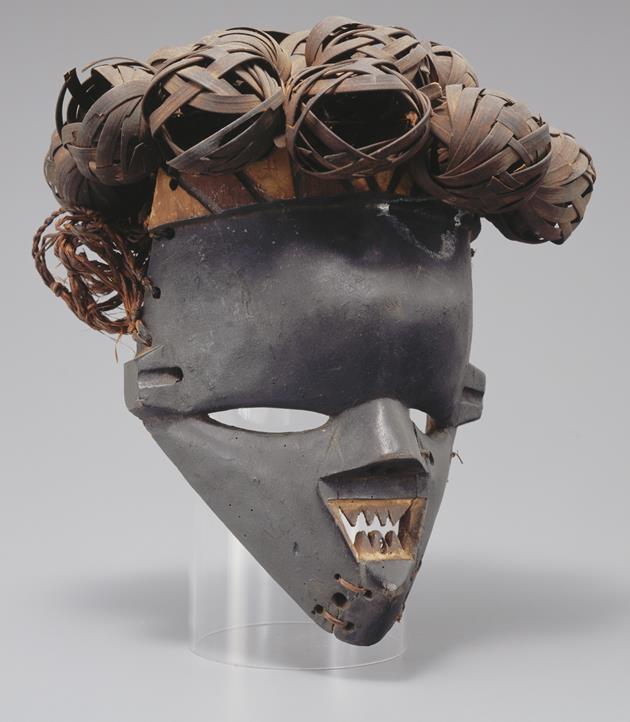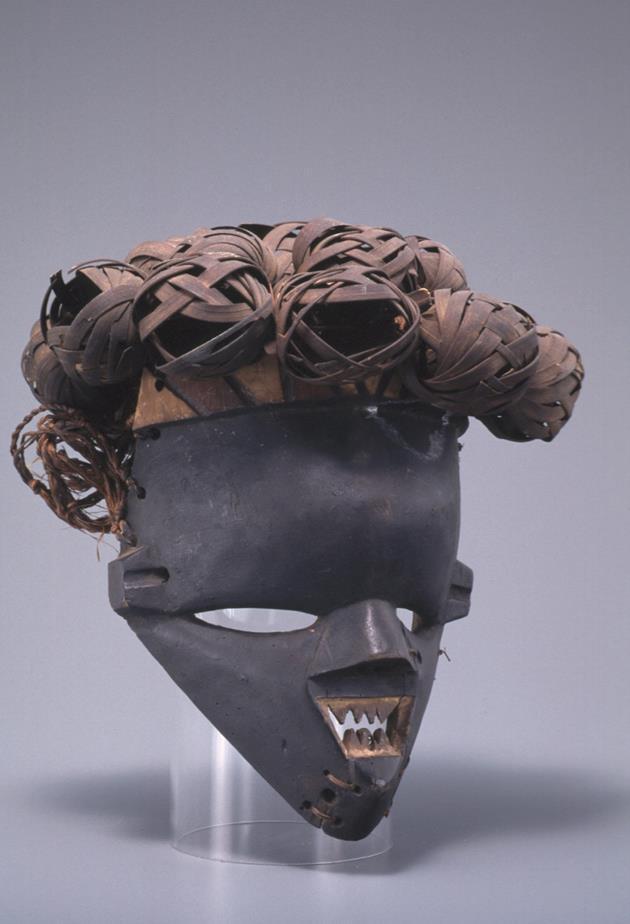Mask
early - mid 20th century
Cane balls have been wound tightly to create a headdress for this mask. It is not known if the balls refer to tufts of hair or not. Pointed teeth represent the practice of filing teeth, a process which tested strength and discipline during the initiation of young men.
Access to masks was once highly restricted in Salampasu culture. Mask societies controlled their use, carefully dispensing the right to wear them to warriors who were prosperous and capable. Acquiring masks was a unique investment, giving access to increased knowledge. As one observer commented in 1973, "If older men had invested their wealth in masks, they retained, to their death and beyond, the inside knowledge and honor symbolized by each mask."
Wood, cane, pigment, and raffia
11 1/4 x 9 5/8 x 8 3/4 in. (28.6 x 24.5 x 22.2 cm)
Gift of Katherine White and the Boeing Company
81.17.903
Provenance: Collected by Marc Leo Felix, Brussles, Belgium, in Zaire, 1977-78; sold to Katherine White (1929-1980), Seattle, Washington, 1978; bequeathed to Seattle Art Museum, Seattle, Washington, 1981



